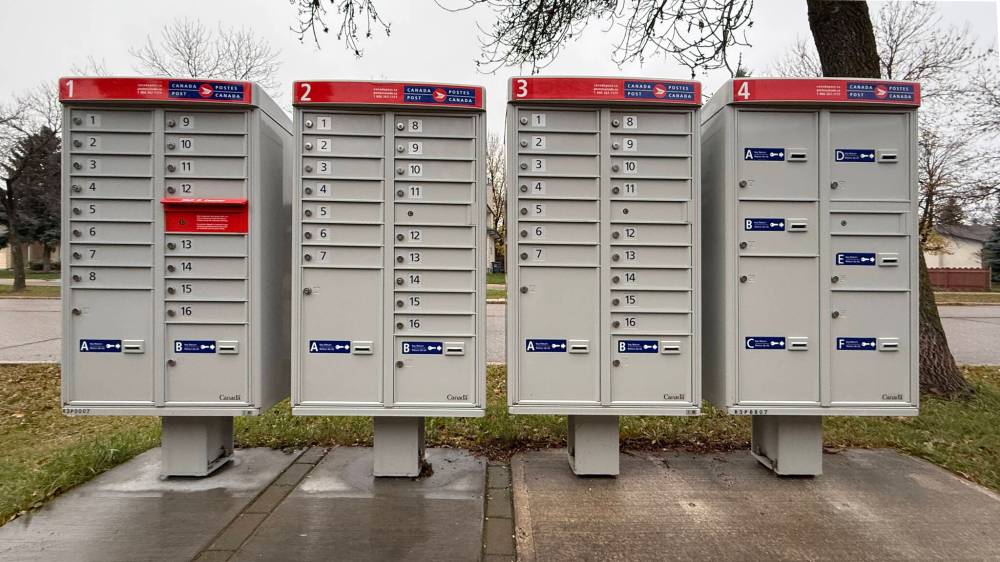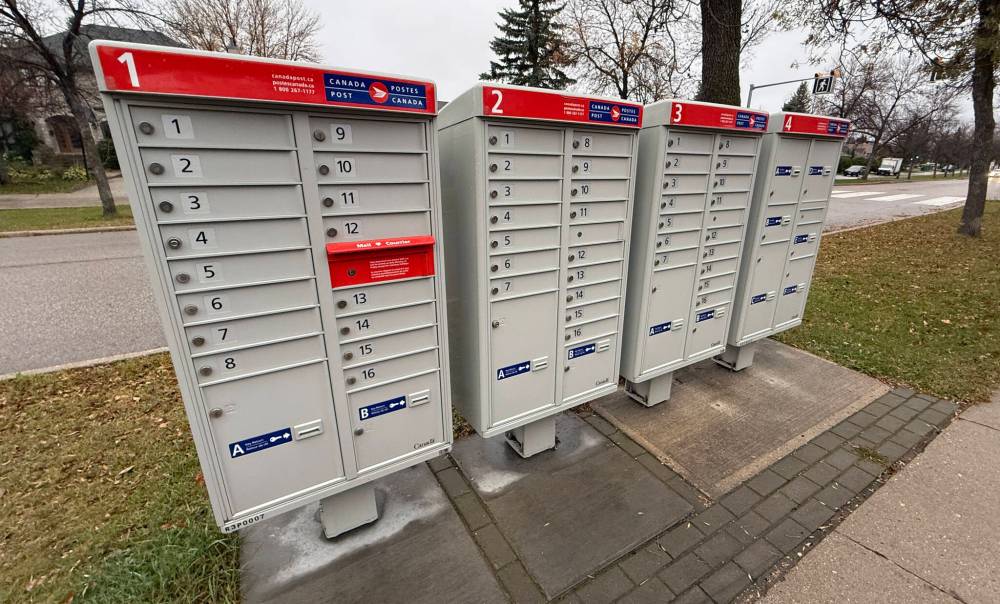An opportunity — if Canada Post chooses to take it
Advertisement
Read this article for free:
or
Already have an account? Log in here »
To continue reading, please subscribe:
Monthly Digital Subscription
$1 per week for 24 weeks*
- Enjoy unlimited reading on winnipegfreepress.com
- Read the E-Edition, our digital replica newspaper
- Access News Break, our award-winning app
- Play interactive puzzles
*Billed as $4.00 plus GST every four weeks. After 24 weeks, price increases to the regular rate of $19.00 plus GST every four weeks. Offer available to new and qualified returning subscribers only. Cancel any time.
Monthly Digital Subscription
$4.75/week*
- Enjoy unlimited reading on winnipegfreepress.com
- Read the E-Edition, our digital replica newspaper
- Access News Break, our award-winning app
- Play interactive puzzles
*Billed as $19 plus GST every four weeks. Cancel any time.
To continue reading, please subscribe:
Add Free Press access to your Brandon Sun subscription for only an additional
$1 for the first 4 weeks*
*Your next subscription payment will increase by $1.00 and you will be charged $16.99 plus GST for four weeks. After four weeks, your payment will increase to $23.99 plus GST every four weeks.
Read unlimited articles for free today:
or
Already have an account? Log in here »
After 158 years, it appears that Canada Post will finally be ending door-to-door mail delivery. With financial pressures intensifying, the federal government recently announced that it will allow a full-scale shift to community mailboxes.
Most suburban neighbourhoods have been using remotely located boxes for several years, but central and pre-1970s residential areas in Canada’s largest cities have retained delivery service until now. The nearly five million remaining households to be transitioned are located in the oldest and highest-density neighbourhoods in the country, which may create some important logistical challenges to the transition.
Higher residential densities will result in community mailboxes being far more ubiquitous than they currently are in low-density suburbs. Winnipeg’s River Heights or Wolseley neighbourhoods, as an example, have between 50 and 60 homes on each block. Implementing the current Canada Post design would result in a community box roughly the length and height of a Honda Civic parked on the boulevard of every single block on every street in the neighbourhood. Areas like Osborne or the West End, where densities are more than double that of River Heights, will see even greater impact. The Toronto Star reported that as many as 11,000 community box hubs will be needed to replace home delivery in that city. The pervasive nature of these large metal boxes will undeniably alter the image and physical character of many historic and inner-city communities across the country.

Brent Bellamy
Canada Post has an opportunity to improve on the plain boxes of community mailbox installation
The density and compactness of older neighbourhoods will also create functional challenges, as they often lack the wide boulevards and open areas found in suburbs to accommodate large mailbox installations. They will inevitably eat into already precious public space and make maintenance issues like sidewalk snow-clearing more costly and challenging than it already is. This could further exacerbate accessibility and safety issues in a city that already averages more than 10 people per day visiting the hospital to treat injuries from falling on snow and ice during the winter.
With such little public space, these mail hubs will inevitably be located close to homes, which may create a loss of privacy, increased traffic, noise, and garbage. They can also impact driver visibility and be a magnet for vandalism and theft in inner-city areas.
This intervention into the landscape of urban neighbourhoods across the country will be an unprecedented challenge, but if we are thoughtful and creative, it might be an unprecedented opportunity.
Attractive and dynamic neighbourhoods value the quality of the human-scale elements we interact with every day. The fine-grained texture of paving patterns, the rhythm of storefronts, light standards, boulevard trees, benches, planters and sidewalks, all work together to establish neighbourhood character and create walkable, safe and cohesive communities.
The installation of community mailboxes might be seen as an opportunity to create a new type of street furniture that is beautiful and meaningful, weaving itself into this neighbourhood tapestry. If allowed to dream, the opportunities are limitless. What if instead of simply rolling out the same utilitarian metal boxes across the country, local artistic communities were engaged to design mailboxes that respond to unique site conditions, create a sense of place, and tell a story about the people who will use them? A well-publicized national design competition or a series of local workshops might capture the imagination of the country.
Collaborative community engagement may uncover creative new ideas, respond to local tradition, and identify unique social, cultural, physical and climatic opportunities. Designers might be given modular components and a practical design framework that allows the creation of functional, cost-effective solutions with regional variation and local expression of creativity and storytelling.
Where possible, these kiosks could be treated as small-scale nodes that encourage social connection, not unlike the traditional small-town post office. They might include Wi-Fi hotspots, space for posters and advertising, newspaper boxes, benches, people-and-pet-friendly water fountains, shade canopies or bicycle maintenance tools. With an understanding of local dynamics and mobility patterns, kiosks could be strategically located to increase foot traffic to neighbourhood shops. Small seating areas or space for buskers might be incorporated to encourage pedestrian traffic to linger and support local businesses.
Imagine the impact on local communities if the transition is approached as the world’s largest installation of functional public art, a series of beautifully designed objects peppered through the landscape of every Canadian city, with a micro-plaza and engaging urban sculpture dispensing mail on every corner. With a creative and holistic vision that reaches beyond mail delivery, these new mailboxes might become a unique and positive contribution to modern city life.

The transition to community mailboxes is set to save Canada Post $400 million per year. Could part of that money be invested in our neighbourhoods to reach beyond the typical tin box bolted to a concrete pad? Our cities are a reflection of who we are, and as Canadians we should demand creative thinking and quality design in our shared public spaces.
Canada Post’s move to introduce community mailboxes in urban areas offers a valuable opportunity to respond ambitiously and creatively, taking a difficult challenge and turning it into a lasting, positive investment in our communities. We can either treat it as a simple logistical change, or as an opportunity to create an identifiably Canadian example of thoughtful, design-led urban transformation.
By approaching the change with a progressive mindset and committing to excellence in design, placemaking, and community building, this vast new network of tiny, beautiful public spaces, woven into the urban fabric of Canadian cities, has the potential to invigorate social, cultural, and physical connections within our neighbourhoods. If done successfully, it could set a visionary example for cities around the world to follow.
Brent Bellamy is creative director at Number Ten Architectural Group.

Brent Bellamy is creative director for Number Ten Architectural Group.
Our newsroom depends on a growing audience of readers to power our journalism. If you are not a paid reader, please consider becoming a subscriber.
Our newsroom depends on its audience of readers to power our journalism. Thank you for your support.


